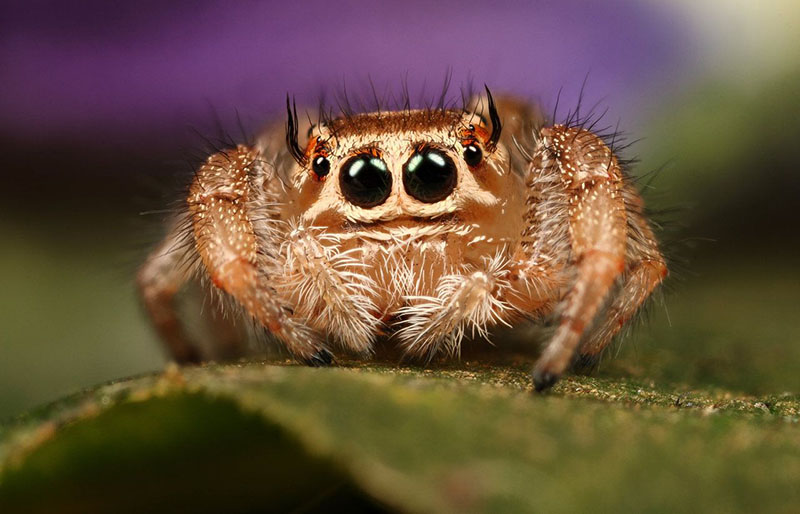Spiders
blah

Spiders are arachnids in the order Araneae, identified by their eight legs, venomous fangs, and ability to produce silk. Many, many people dislike spiders. They almost seem built to scare us- many eyes, many legs, and sharp fangs. Their hydraulic-powered legs move mechanically, and the fact that they eat by injecting prey with digestive juices and sucking out the resulting slurry is pretty gross.
A lot of the fear of spiders is based on their venom, and whether it can pose a threat to humans. Horror stories about the results of black widow or brown recluse bites abound, and more common household arachnids are also labeled as highly dangerous. However, I am happy to be able to tell you that the threat of spiders to humans has been greatly exaggerated. Most spider bites are no more severe than a bee sting. Misinformation about spiders abounds, such as the myth that yellow sac spiders are dangerous or deadly. I personally was bitten by one after accidentally crushing it, and only experienced mild pain that stopped after an hour.
Even the most “deadly” of spiders in North America (widows and recluses) hardly pose a threat to most people. Out of the 1,866 bites from black widows reported to American poison control centers in 2013, only 14 caused severe illness, and none of them caused death. Black widows really don't want to bite you, only going in when they perceive extreme danger, and even when they do bite, they often don't even inject venom. As for brown recluses, I remember hearing a story from an elementary school teacher about how she received a bite and rushed to the hospital, narrowly avoiding her leg rotting off. I stayed wary around any unknown, brown spiders for a long time after hearing that- until I learned that, between two studies of the most severe brown recluse bites, the largest wound that resulted from the venom was only the size of a mandarin orange. Still gross and unpleasant to have, but nothing close to amputation.
Though the risk of serious symptoms is small, being bit is never pleasant, so it's worth it to take precautions. This is especially true for young children, the elderly, and ill people, who are at the highest risk for poisoning. Brown recluses may shelter in undisturbed corners, so shaking out clothes, bedding, and other items you're taking out of storage is a good way to avoid them. Black widows are more outdoorsy, so washing your fruit and vegetables before eating and regularly cleaning any outdoor furniture will take care of them.
What should be feared is not the deaths caused by spiders, but the deaths that would be caused if spiders disappeared. Spiders eat massive amounts of insects each year, and that includes agricultural pests, making them highly effective eight-legged pest control. They're so effective that without spiders, we would experience widespread famine. And we're not the only ones- spiders make up a huge portion of the diet of baby birds. Spider silk is also an important part of many bird nests, providing strength and insulation.
To me, spiders are quite cute. They're a lot like cats: patient, stealthy, fuzzy little hunters. You may find long gangly spiders or massive tarantulas frightening, but look at a jumping spider's big round eyes and tell me they don't have any charm.

One really cute behavior spiders do is ballooning (yes, that's the scientific term for it!). To disperse their population, young spiders will produce a special strand of silk that uses electrical forces to lift them into the air. They parachute with the power of static electricity! And this method can get them at least four kilometers into the air, and 1600 kilometers out at sea.
Like other bugs, spiders are threatened by the destruction of their habitats. Consider planting native plants and defending the wild areas in your community. To learn more about common North American house spiders, check out Travis McEnery's excellent Youtube videos, which gave me a lot of the information on this page. Here's one that can help you identify whether you've found a brown recluse:
My other sources are LiveScience and the Atlantic.